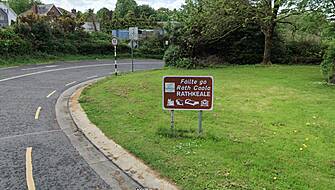A manslaughter trial has heard there is “a direct chain of causation” from a leg injury to the formation of a blood clot which caused the alleged victim's death.
Ronan Byrne (31) is alleged to have fractured James Marren's leg with a bat during an altercation.
A jury has heard that days after the man's leg was put in a cast at a hospital, a blood clot developed in his leg which travelled to his heart and this clot proved fatal.
Mr Byrne, of Lohunda Downs, Clonsilla, Blanchardstown, Dublin, has pleaded not guilty at Dublin Circuit Criminal Court to the unlawful killing of Mr Marren (57) at that address on October 31st, 2013.
He also denies production of a baseball bat during a dispute and assault of James Marren causing him harm at the same address five days earlier on October 26th, 2013.
The court heard the defendant's mother, Mairead Byrne, and Mr Marren had been in a relationship for at least 13 years.
Expert evidence
On the fourth day of the trial on Tuesday, Dr Stuart Hamilton told Philipp Rahn BL, prosecuting, that he was present to give expert evidence as a forensic pathologist.
Dr Hamilton said he was asked to examine the report of the deputy State pathologist regarding their post-mortem examination of Mr Marren carried out on November 1st, 2013. He said he also examined photographs taken during the examination.
He said in his opinion, the cause of death of Mr Marren was that he sustained trauma to his right leg, which caused a deep vein thrombosis in his right leg, which caused a pulmonary embolism.
Dr Hamilton said that when a leg is injured, it is relatively immobilised by a cast and also trauma can cause the blood to get stickier.
He said as a result, a deep vein thrombosis develops, part of that clot becomes dislodged and travels through the right side of the heart and as it moves into the blood vessels of the lungs, it is a solid object that will not pass through a tube smaller than it is and will lodge.
Dr Hamilton said it is one of the rare medical conditions that will cause someone to “simply drop dead”. He said it is his opinion that is the pathological, biological reason why Mr Marren has died.
He said if it is accepted by the jury that the injury to the leg was sustained in the incident, then in his view there is “a direct chain of causation” from that injury to the clot in his leg and therefore a direct chain from that injury to Mr Marren's death from a pulmonary embolism.
Dr Hamilton agreed with Padraig Dwyer SC, defending, that the ideal situation to give the most informed opinion is where one examines the deceased themselves. He agreed that pathologists can take different views as to what caused a person's death.
Deep vein thrombosis
He agreed that both himself and the pathologist who performed the examination agree it was immobilisation of the right leg which caused the deep vein thrombosis.
He also agreed that the difference is that the other pathologist has offered immobilisation and a tight bandage as a cause of death.
Mr Dwyer asked: "Is it his opinion that the tight bandage was probably not the cause of death?” Dr Hamilton replied that it is not something that he would have included as a cause of death himself.
Dr Hamilton went on to say that he could envisage the possibility that if a bandage was simply tighter right at the top of the calf or knee, that it could slow the blood flow in the veins and that sluggish blood flow does increase the risk of an abnormal clot forming.
Mr Dwyer asked whether it could be the case that this is one of those rare cases where the compression as a result of the bandage could be a contributing cause of death. Dr Hamilton replied he “cannot exclude that”.
Dr Hamilton agreed that deep vein thrombosis is extremely rare in itself, and it is rarer still that someone would die from it. He agreed that death from it is not “foreseeable”.
The trial continues before Judge Patricia Ryan and a jury.







